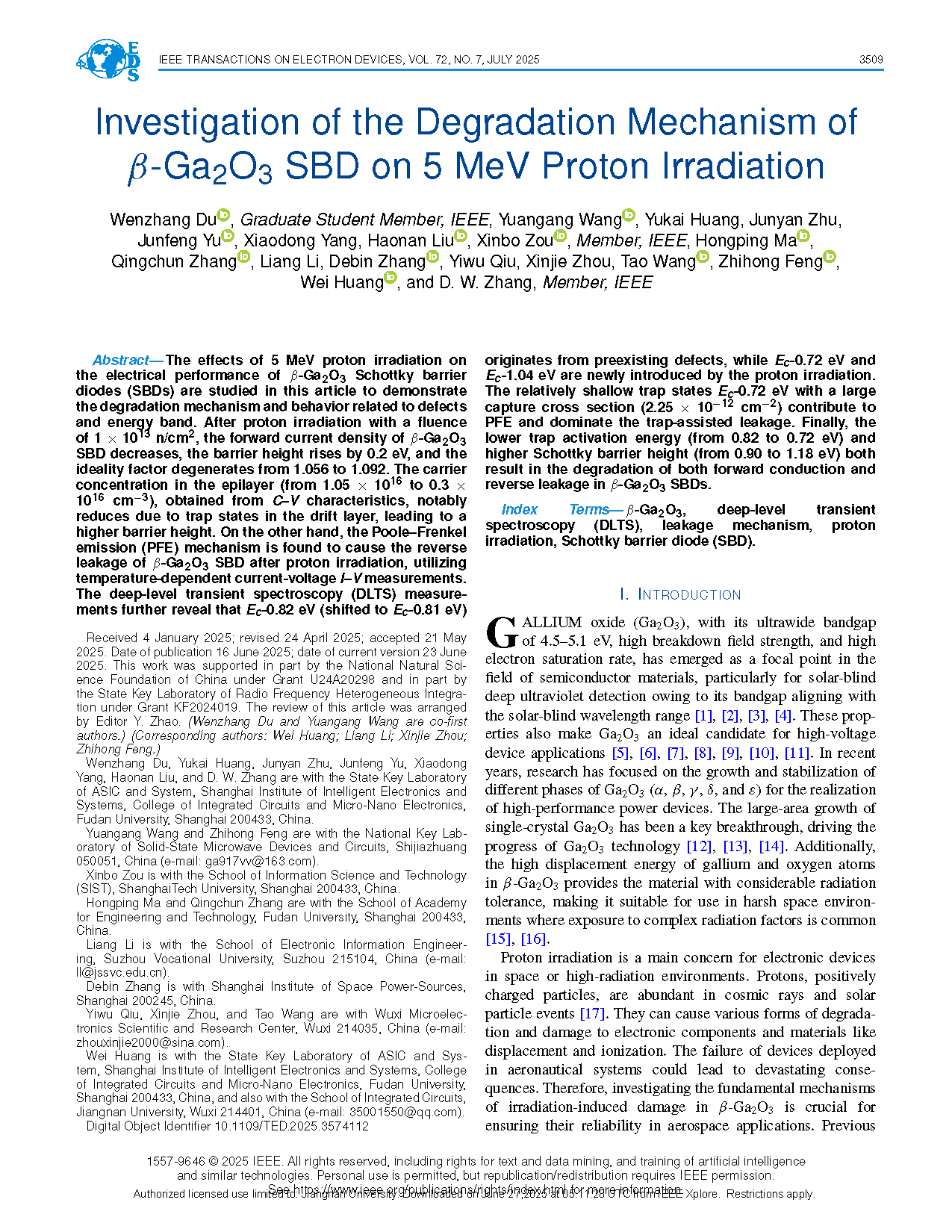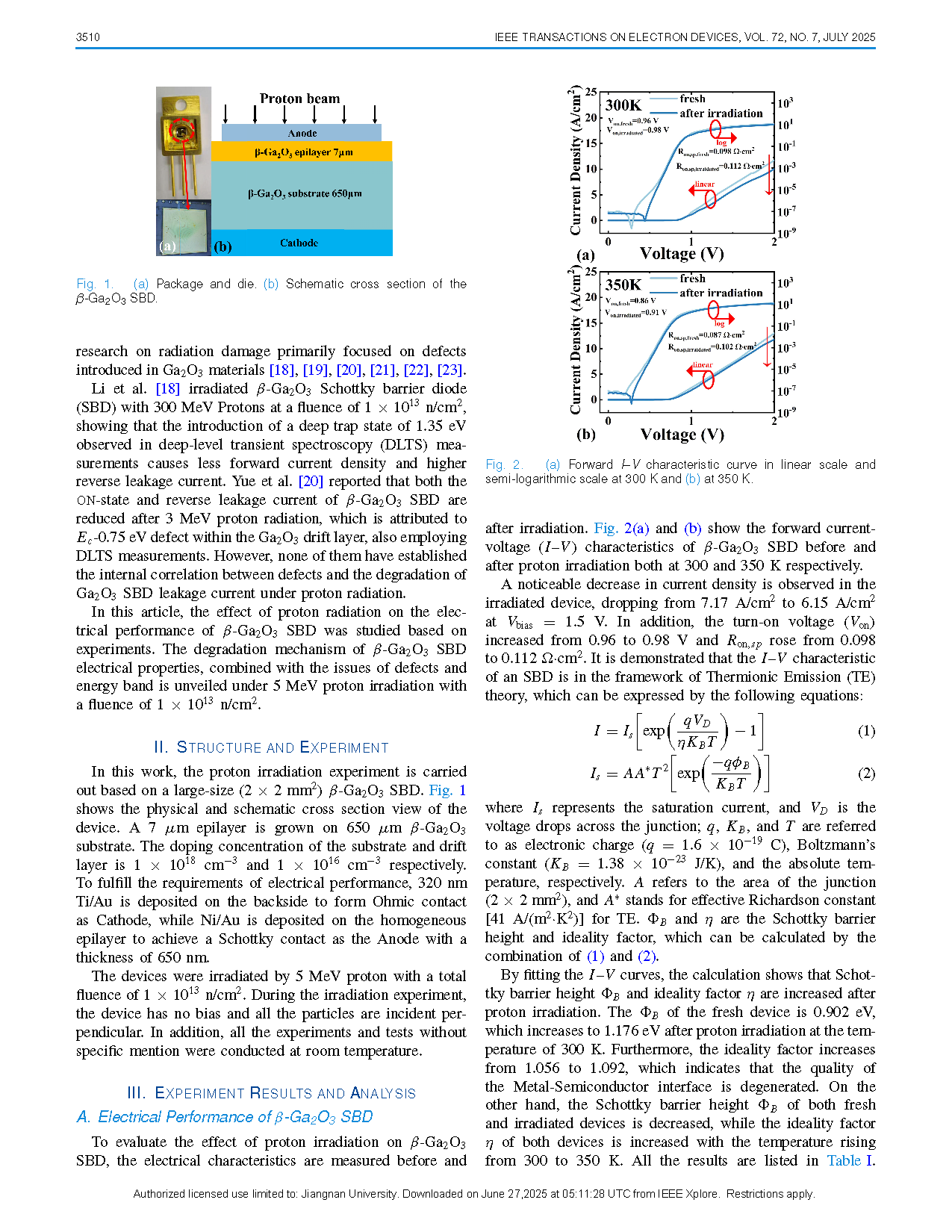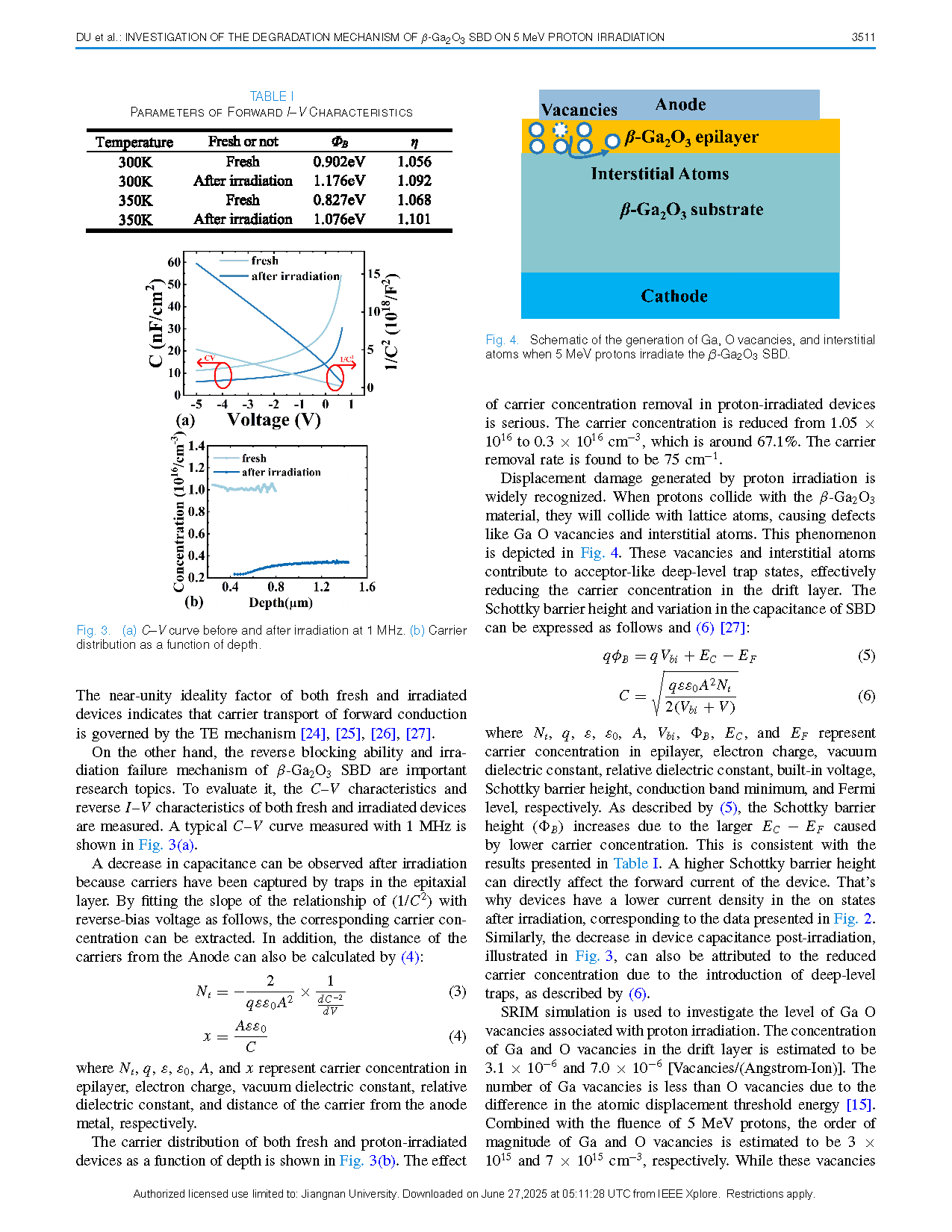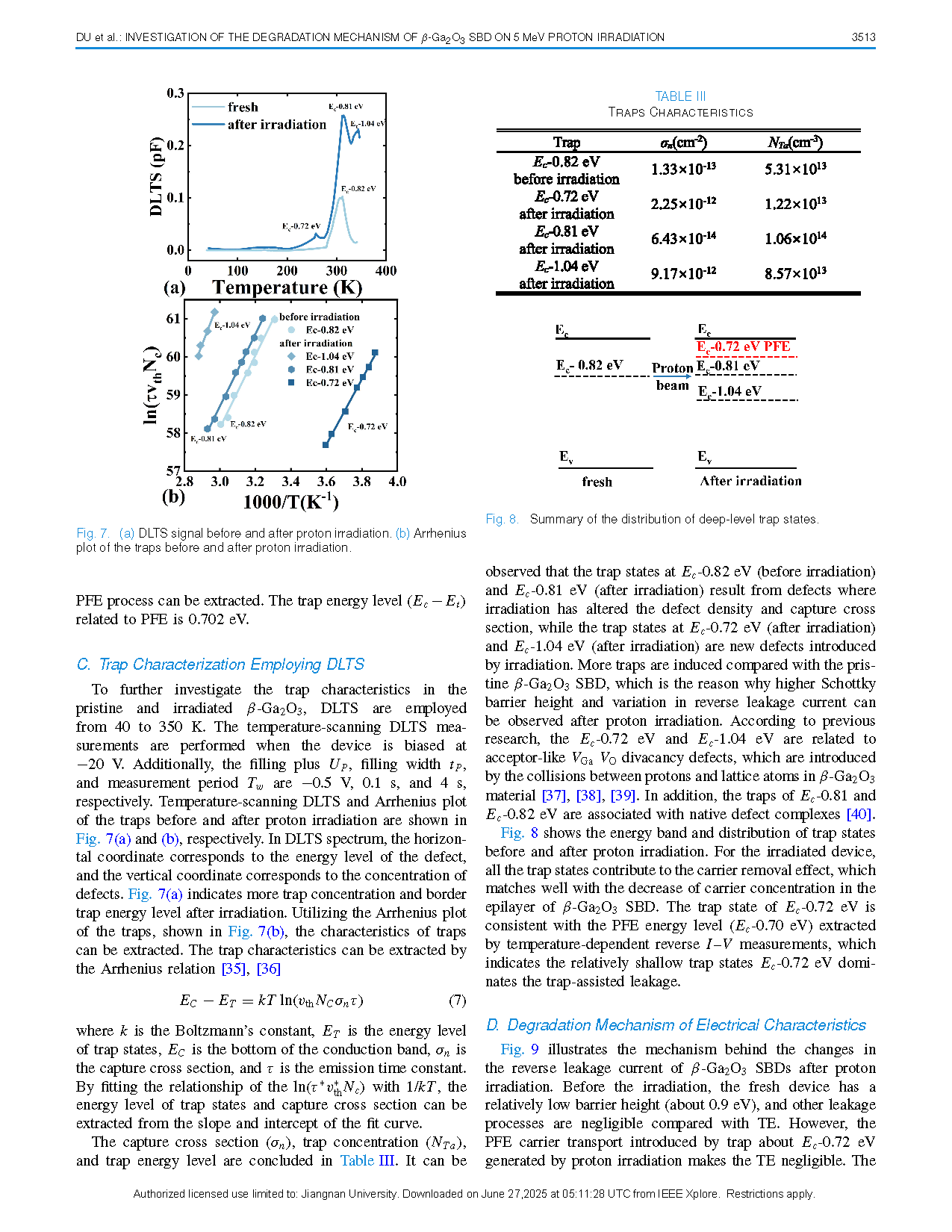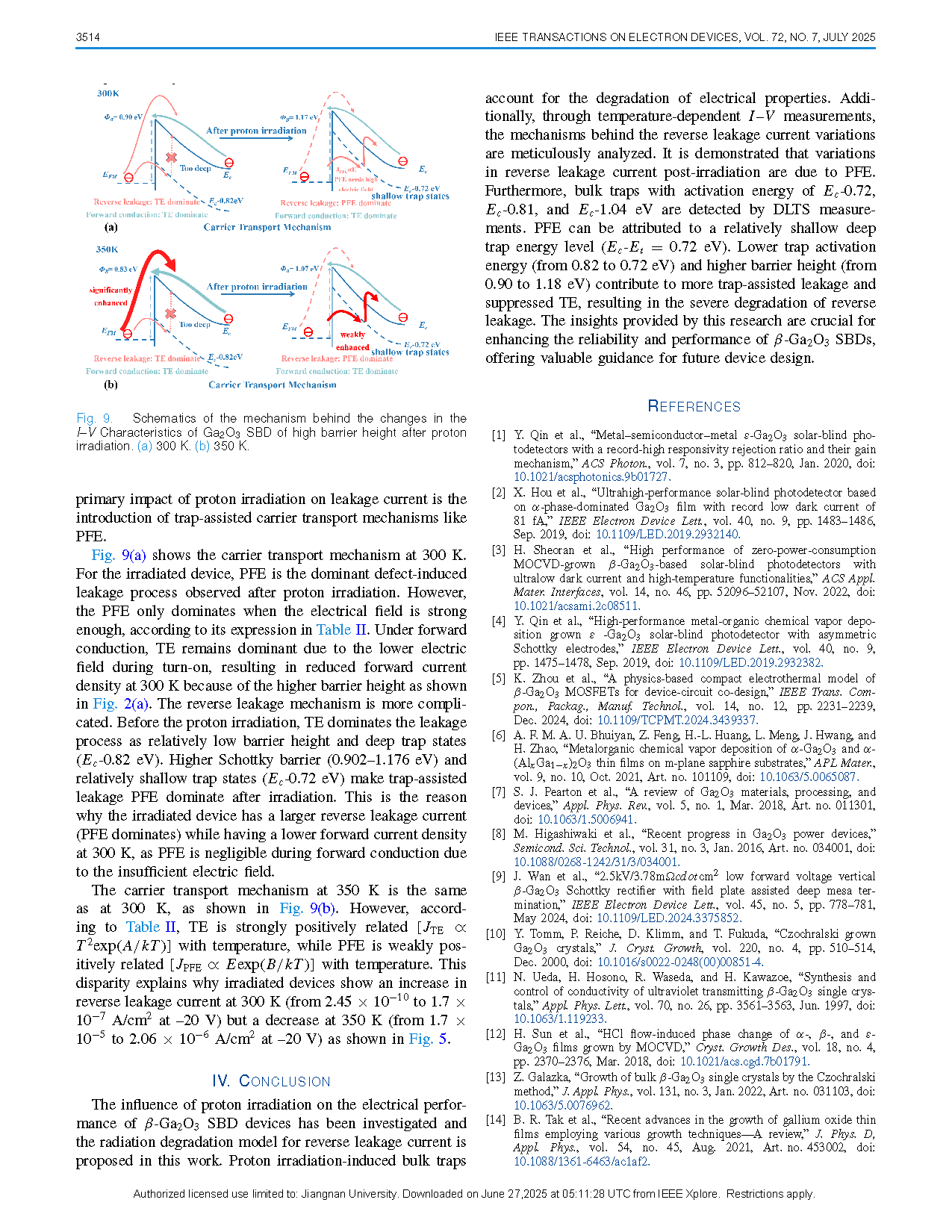
【Member Papers】Investigation of the Degradation Mechanism of β-Ga₂O₃ SBD on 5 MeV Proton Irradiation
日期:2025-07-21阅读:159
Researchers from the Fudan University have published a dissertation titled "Investigation of the Degradation Mechanism of β-Ga2O3 SBD on 5 MeV Proton Irradiation" in IEEE Transactions on Electron Devices.
Project Support
This work was supported in part by the National Natural Sci ence Foundation of China under Grant U24A20298 and in part by the State Key Laboratory of Radio Frequency Heterogeneous Integra tion under Grant KF2024019.
Background
Gallium oxide (Ga2O3), with its ultrawide bandgap of 4.5–5.1 eV, high breakdown field strength, and high electron saturation rate, has emerged as a focal point in the field of semiconductor materials, particularly for solar-blind deep ultraviolet detection owing to its bandgap aligning with the solar-blind wavelength range. These properties also make Ga2O3 an ideal candidate for high-voltage device applications. In recent years, research has focused on the growth and stabilization of different phases of Ga2O3 (α, β, γ, δ, and ε) for the realization of high-performance power devices. The large-area growth of single-crystal Ga2O3 has been a key breakthrough, driving the progress of Ga2O3 technology. Additionally, the high displacement energy of gallium and oxygen atoms in β-Ga2O3 provides the material with considerable radiation tolerance, making it suitable for use in harsh space environments where exposure to complex radiation factors is common.
Abstract
The effects of 5 MeV proton irradiation on the electrical performance of β-Ga2O3 Schottky barrier diodes (SBDs) are studied in this article to demonstrate the degradation mechanism and behavior related to defects and energy band. After proton irradiation with a fluence of 1013 n/cm2, the forward current density of β-Ga2O3 SBD decreases, the barrier height rises by 0.2 eV, and the ideality factor degenerates from 1.056 to 1.092. The carrier concentration in the epilayer (from 1.05×1016 to 0.3×1016 cm-3 ), obtained from C–V characteristics, notably reduces due to trap states in the drift layer, leading to a higher barrier height. On the other hand, the Poole-Frenkel emission (PFE) mechanism is found to cause the reverse leakage ofβ-Ga2O3 SBD after proton irradiation, utilizing temperature-dependent current-voltage I–V measurements. The deep-level transient spectroscopy (DLTS) measurements further reveal that Ec -0.82 eV (shifted to Ec -0.81 eV) originates from preexisting defects, while Ec -0.72 eV and Ec -1.04 eV are newly introduced by the proton irradiation. The relatively shallow trap states Ec -0.72 eV with a large capture cross section ( 2.25×10-12 cm-2 ) contribute to PFE and dominate the trap-assisted leakage. Finally, the lower trap activation energy (from 0.82 to 0.72 eV) and higher Schottky barrier height (from 0.90 to 1.18 eV) both result in the degradation of both forward conduction and reverse leakage in β-Ga2O3 SBDs.
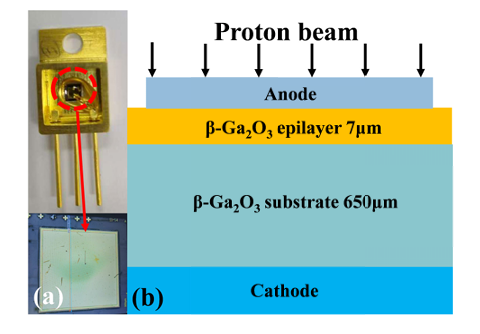
Fig. 1. (a) Package and die. (b) Schematic cross section of the β-Ga2O3 SBD.
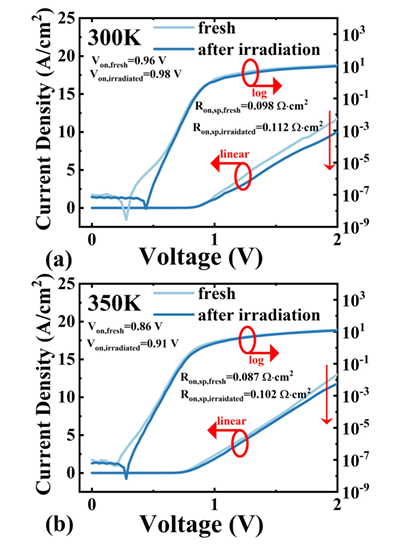
Fig. 2. (a) Forward I–V characteristic curve in linear scale and semi-logarithmic scale at 300 K and (b) at 350 K.
DOI:
doi.org/10.1109/TED.2025.3574112
